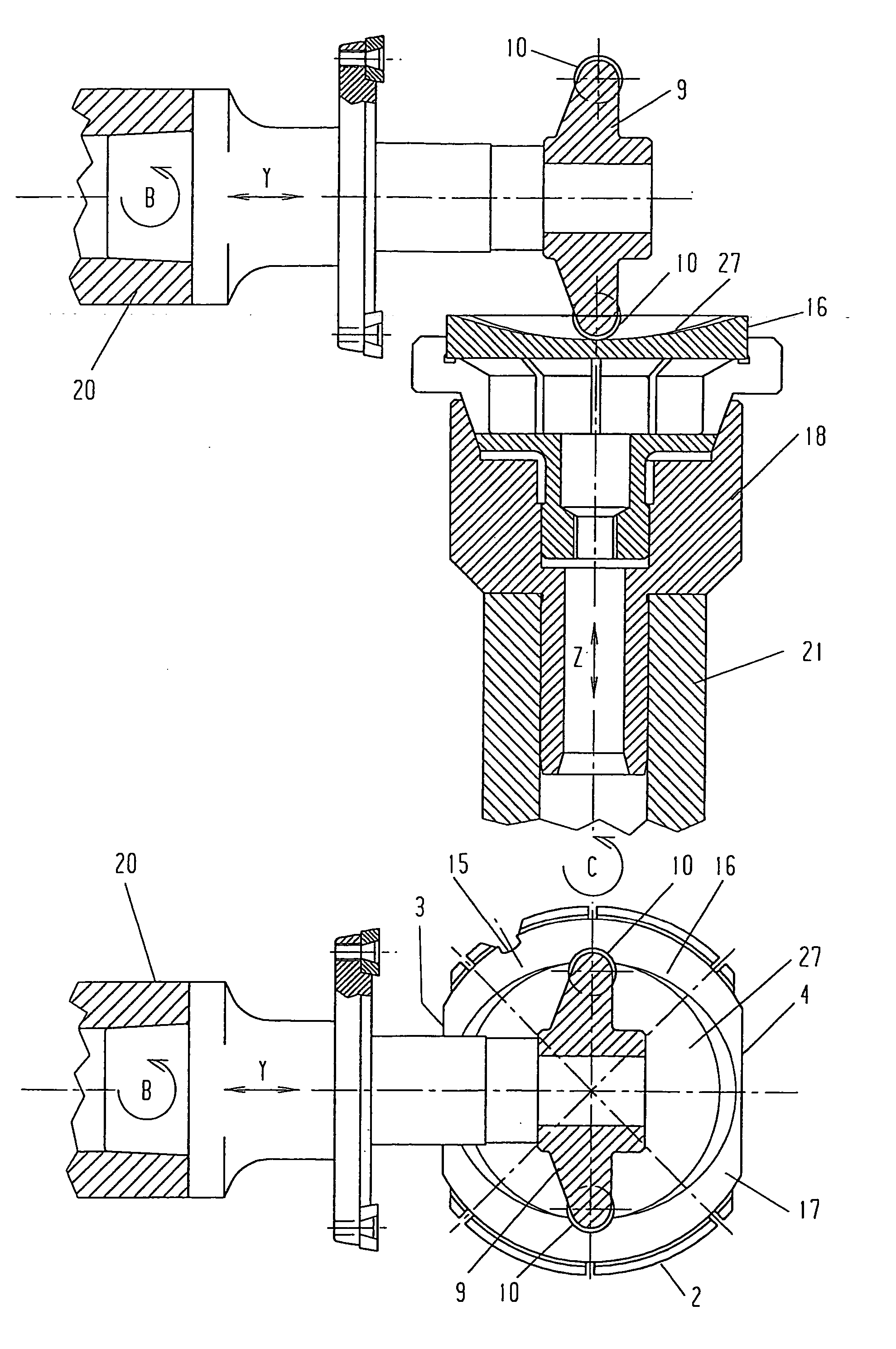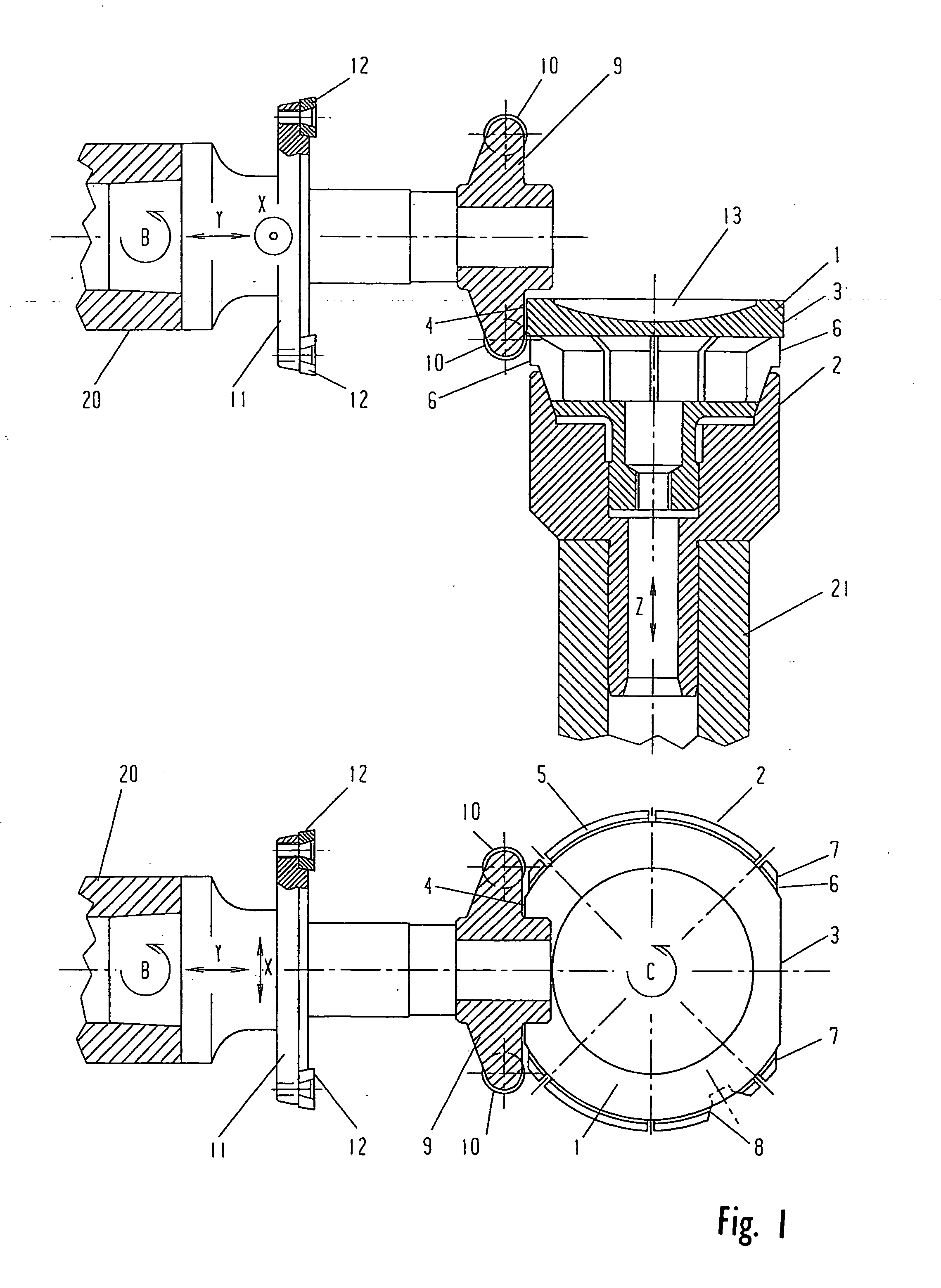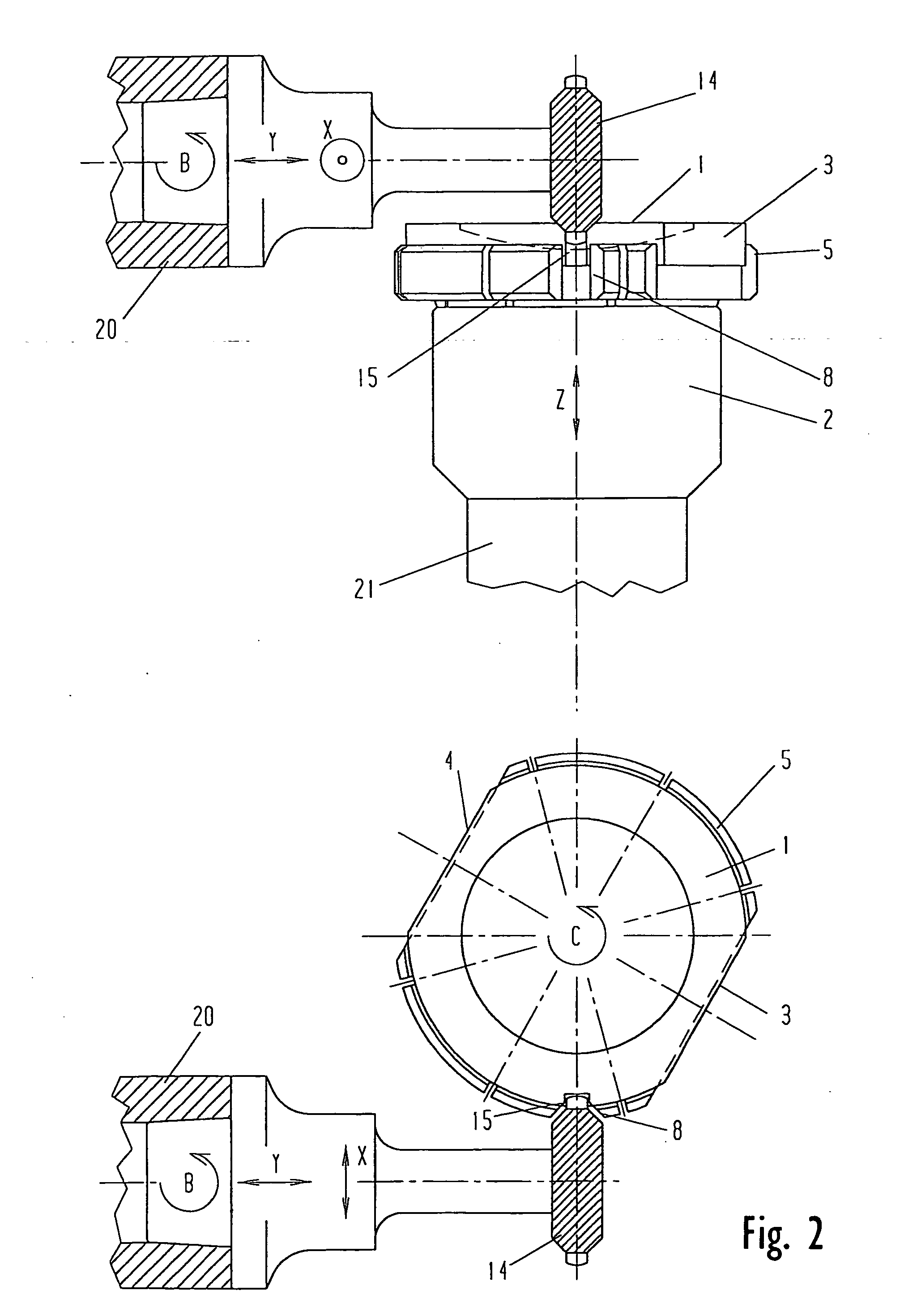Method and device for producing ophthalmic lenses and other shaped bodies with optically active surfaces
a technology of optical active surfaces and ophthalmic lenses, which is applied in the direction of grinding machines, turning apparatuses, applications, etc., can solve the problems of inability to clamp ophthalmic lenses, undesired alterations of surface geometry, and increased production costs, so as to avoid thermal stress of ophthalmic lenses
- Summary
- Abstract
- Description
- Claims
- Application Information
AI Technical Summary
Benefits of technology
Problems solved by technology
Method used
Image
Examples
Embodiment Construction
[0211] The present example of alternative 1 of the first embodiment provides a plastic blank with a plane front face, whereas its rear face presents a spheroidisation with an unprocessed surface. This example is one of several alternatives of methods and devices which are provided in connection with plus lenses. However, the same applies accordingly for neutral lenses and minus lenses.
[0212] The illustrations of the devices do not show the machines themselves but only their tool and workpiece spindles with the processing and clamping tools attached to them. This simplification was selected for ease of illustration of details of the devices according to the invention.
[0213]FIG. 1 shows the production of the two flattenings 3 and 4 on the milling / turning machine in a front view and a top view (sectional views).
[0214] The plastic blank 1 is clamped in a clamping tool 2 which is connected with the workpiece spindle 21 of the milling / turning machine.
[0215] In this processing step, th...
PUM
| Property | Measurement | Unit |
|---|---|---|
| Thickness | aaaaa | aaaaa |
| Diameter | aaaaa | aaaaa |
| Shape | aaaaa | aaaaa |
Abstract
Description
Claims
Application Information
 Login to View More
Login to View More - R&D
- Intellectual Property
- Life Sciences
- Materials
- Tech Scout
- Unparalleled Data Quality
- Higher Quality Content
- 60% Fewer Hallucinations
Browse by: Latest US Patents, China's latest patents, Technical Efficacy Thesaurus, Application Domain, Technology Topic, Popular Technical Reports.
© 2025 PatSnap. All rights reserved.Legal|Privacy policy|Modern Slavery Act Transparency Statement|Sitemap|About US| Contact US: help@patsnap.com



